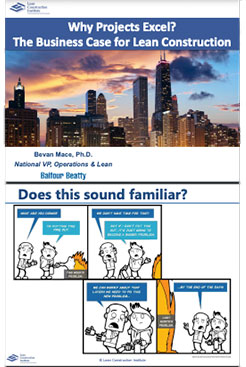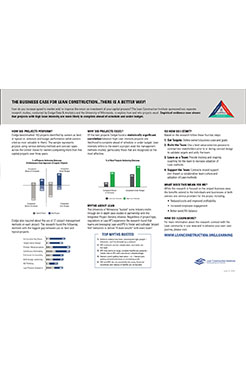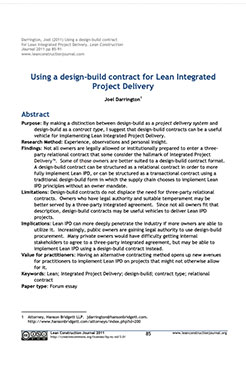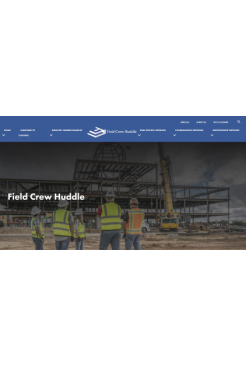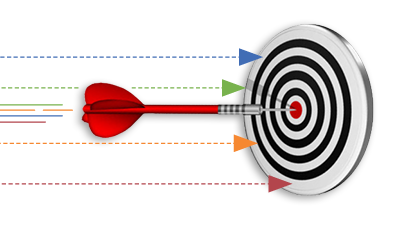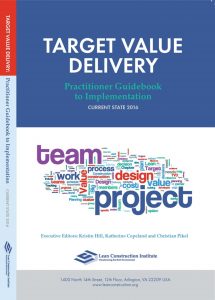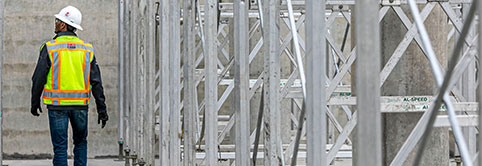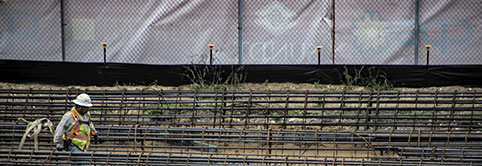Lean Project Delivery
An Introduction to Lean Project Delivery
Traditional construction project delivery models produce numerous problems within the industry. Rework and waste totals are high, resulting in 70% of projects to be delivered late and 73% of projects delivered over-budget. This leads to ever-shrinking profit margins and dissatisfaction among owners, of whom only 9% say they are achieving a high level of excellence in project performance.
Traditional project delivery models also lead to hundreds of thousands of injuries in construction projects each year. Lean project delivery aims to transform the built environment into a place where everyone from trade partners to project managers thrive.
At its core, Lean in project delivery is a mindset geared towards creating a culture of respect and continuous improvement with the aim of generating maximum value for customers and stakeholders by identifying value and eliminating waste in processes.

What is Lean Project Delivery?
Lean Project Delivery is an organized implementation of Lean principles and tools combined to allow a team to operate in unison to create flow. While many people think that Lean can only be achieved through using the Integrated Project Delivery model, Lean concepts can be applied to any form of project delivery model to generate better outcomes for stakeholders.
Project Management that Solves Problems
Lean delivery aims to solve these problems within the design and construction industry. By using a Lean operating system, designers and builders are able to deliver projects on-time and within their budgets, minimize waste and rework, improve safety, and achieve higher levels of customer satisfaction.
The Lean Construction Institute believes that Lean can be implemented into any project business plan through focusing on the six tenets of LCI.
Benefits of Lean Project Delivery
Designers and builders who implement Lean methods see a huge improvement in project outcomes due to a boost in innovation. Projects that utilize Lean concepts also see a decrease in waste and injuries, among other benefits. Ultimately, the project team is the lifeblood and foundation of a Lean project. Without the right people in place, it’s impossible to create the proper work processes for Lean methods to take hold. Let’s examine more about what it means to build a high-performing team.
Importance of Building a High-Performing Team
Lean thinking requires a strong team. An individual cannot be Lean on their own since it takes those in charge of a project to effectively implement the six tenets. However, with the right team in place a set of people can achieve great results utilizing Lean concepts.
One of the challenges teams face is that they are often temporary and many members might be working together for the first time. However, this presents a good reason for those members to break old habits and form new processes that can be beneficial for the project. This is why building a strong team from the outset is foundational to achieving great results through Lean.
The first step to integrating a Lean Project Delivery model is to identify the key members of your team at the earliest stages of the project. High-performing teams are defined by having a strong culture of respect and trust along with a track record for maintaining and following through on commitments.
A high-performing team also needs members to be willing to listen to one another to innovate. The team also needs its members to be willing to identify areas for process improvement through continuous retrospection.
Importantly, high-performing teams also break down traditional silos to maximize skills and optimize performance.
What’s the Difference Between Lean Project Delivery (LPD) and Integrated Project Delivery (IPD)?
Lean is a mindset that is manifested by applying the six tenets of LCI to any design and construction enterprise. Any project delivery method can implement Lean concepts to achieve greater results.
Integrated Project Delivery is a contract structure that defines a specific delivery model. IPD combines the design, construction, ownership, and general contractors together onto a single project contract and designates a target cost for construction in order to foster collaboration and innovation. This generates an environment in which Lean concepts can thrive, but a project doesn’t need to utilize an IPD structure to take advantage of Lean methods.
How Can Lean Project Delivery Be Implemented?
While collaboration between the design and construction teams is often a component of Lean thinking, design teams and builders can still implement Lean methods without involving the other party.
Lean Project Delivery in Design
Here are some ways to implement Lean Project Delivery methods in the design phase.
- Last Planner System® (LPS®) – System for project production planning and control, aimed at creating a workflow that achieves reliable execution.
- Conditions of Satisfaction (CoS) – Collaboratively developed measurable statements that inform a project team about which tests a project must pass to be accepted as a success. Teams can utilize this method to increase rates of owner satisfaction in project outcomes and to ensure interests are aligned in projects.
- Set-based Design (SBD) – A design method whereby sets of alternative solutions to parts of the problem are kept open until their Last Responsible Moment(s), in order to find by means of set intersection the best combination that solves the problem as a whole.
- A3 Thinking – A collaborative methodology that supports sound decision making by including all key stakeholder perspectives.
Lean Project Delivery in Construction
Here are some ways in which Lean Project Delivery methods can be added to the construction phase.
- Last Planner System (LPS) – Just like designers, building teams can use the Last Planner System for optimal project planning to generate flow in the project’s processes.
- 5S – A disciplined approach to maintaining order in the workplace, using visual controls, to eliminate waste. The 5S words are Sort, Set in Order, Shine/Sweep, Standardize and Self-Discipline/Sustain.
- A3 Thinking – In an industry where problems seem to arise out of nowhere, A3 thinking is a method of decision making which values the opinions of all stakeholders.
Learn Lean Project Delivery
The Lean Construction Institute is committed to transforming the design and construction industry by providing Lean educational resources, conducting research, and facilitating local and national Lean events. It is only through the power of LCI Corporate Members that LCI is able to offer the supplementary resources below. Explore, download and share to advance Lean transformation across the built environment.
Lean Assessments
How strong is your Lean knowledge? Take a Lean assessment to determine your current state so you have a baseline for improvement. Lean assessments are available for individuals, teams, and organizations alike. Whether you’re new to Lean or are an experienced Lean practitioner, Lean assessments are a great way to get started at LCI!
TAKE ASSESSMENTMore Lean Topics
From 5s to IPD, explore popular Lean design and construction topics below.

